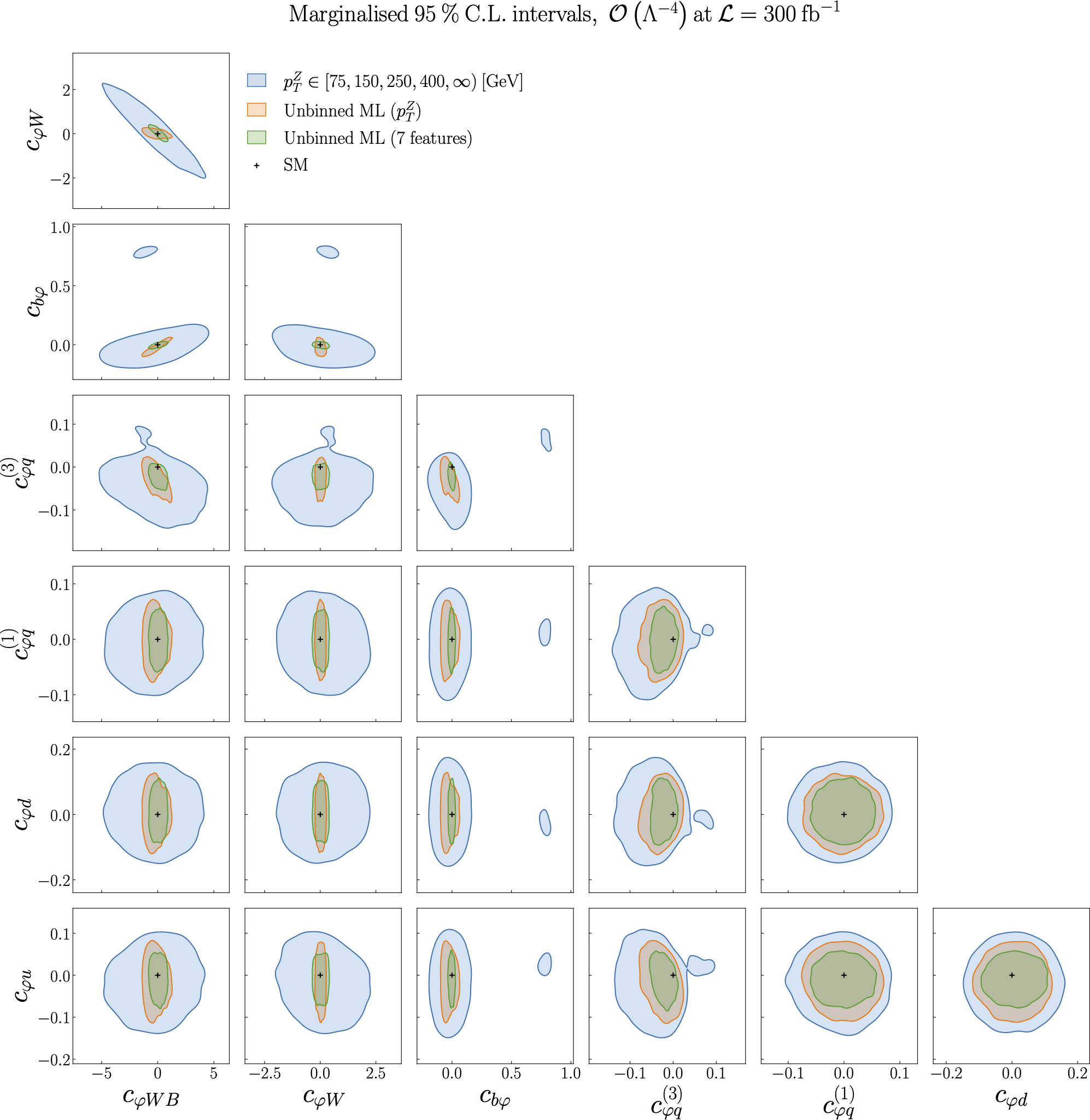Results from the ML model vs binning in p_{T}^{Z}, O(\Lambda^{-4}), fully marginalised
Results from the ML model vs binning in \(p_{T}^{Z}\), \(O(\Lambda^{-4})\), fully marginalised#
Figure 5.8 of [Gomez Ambrosio et al., 2022].
The 95% CL contour ellipses, this time obtained from a marginalisation over the complete posterior distribution obtained from Nested Sampling at the quadratic level in the EFT expansion.
We compare the bounds obtained from a binned \(p_{T}^{Z}\) distribution with those from two ML unbinned observables, first when only \(p_{T}^{Z}\) is used for the training and second when \(n_{k} = 7\) kinematic features are used to parametrise the likelihood ratio.
We observe a marked improvement in the constraints obtained on each SMEFT operator when the ML model is used, particularly when all kinematic features are used.
